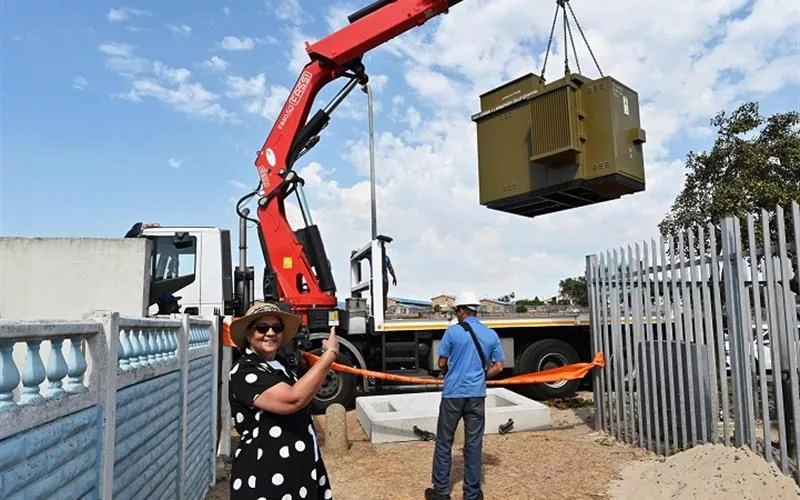A new project called Beacon Valley Rejuvenation is upgrading infrastructure in Cape Town’s Area South with a R68.5 million investment. The project features the establishment of a mini-substation powering homes and businesses, but it is facing challenges due to vandalism and load-shedding periods. The city’s energy squads are implementing innovative strategies to combat the issue and the community is requested to cooperate in safeguarding infrastructure.
What is the Beacon Valley Rejuvenation project?
Beacon Valley Rejuvenation is a comprehensive R68.5 million infrastructural renovation drive aimed at upgrading the infrastructure in Area South, Cape Town. The project includes the establishment of a mini-substation responsible for providing consistent and sturdy electric power to the community. However, the project faces challenges due to vandalism and load-shedding periods. The city’s energy squads are implementing various innovative strategies, and the community is requested to cooperate to safeguard the communal infrastructure.
When daybreak arrived on March 6, 2024, the metropolis’ energy squads kicked off an intriguing venture in Beacon Valley. A significant player in the city’s vast electrical grid, a mini-substation, was newly established in this urban sector. This endeavour is a part of a comprehensive R68.5 million infrastructural renovation drive, signifying the city council’s dedication towards upgrading the infrastructure in Area South.
Mini-Substation – A Vital Component
Although compact in physical dimension, the mini-substation is entrusted with the monumental task of dispensing consistent and sturdy electric power to innumerable homes and commercial enterprises. It essentially serves as the community’s lifeline, energizing residences, businesses, and the aspirations of the local populace.
The inauguration of this crucial entity was a momentous event. The city’s Energy Committee’s Mayoral Member, Councillor Beverley van Reenen, was in attendance to monitor the proceedings, along with the devoted energy squads. Together, they scrutinized not just the mini-substation, but also the diverse streetlight improvements in the Mitchells Plain vicinity.
Behind the Curtain of Renewal
However, this narrative of rejuvenation isn’t devoid of impediments.
“The rate at which our mini substations are being vandalized is distressing,” remarked Councillor van Reenen. She also shed light on the criminal elements taking advantage of the city’s infrastructure’s susceptibility during load-shedding periods to indulge in thievery and destruction. In spite of this, the authorities remain alert, encouraging residents to report any abnormal activity to safeguard the communal infrastructure.
The struggle against defacement is especially acute in Area South. The districts of Mitchells Plain, Gugulethu, Wynberg, and Philippi are grappling with excessive levels of vandalism tied to incessant load-shedding by Eskom. This barrage has exerted substantial pressure on the city’s energy squads, leading to service lags, especially in the context of single streetlight failures.
Rise of Innovative Measures
Nevertheless, hardship often breeds inventiveness.
While working under unusual conditions, the city’s energy squads are considering various inventive strategies. Operational modifications are being instituted to boost service provision, cut down response times, and expeditiously eliminate any backlogs. This involves bringing on board additional artisans, a tactical decision to fortify the city’s workforce to confront the challenges.
However, the war against defacement is not a solo battle. The city needs its citizens’ cooperation. Any dubious activities near the electrical infrastructure should be reported to either the city’s law enforcement agencies or the Fraud Hotline. As the primary authority on crime prevention, SAPS holds a vital position in this struggle.
A Call for Collective Effort
Consequently, the story of Beacon Valley is not just about energy transformation, but also a plea for community involvement. It is a tribute to the city’s tenacity in the face of hardship and the strength of united action. This journey of rejuvenation and creativity has just set sail, and the path forward is brimming with potential.
What are the main components of the Beacon Valley Rejuvenation project?
The Beacon Valley Rejuvenation project is upgrading infrastructure in Cape Town’s Area South with a R68.5 million investment. The project features the establishment of a mini-substation powering homes and businesses, along with diverse streetlight improvements.
What is the purpose of the mini-substation in the Beacon Valley Rejuvenation project?
The mini-substation is responsible for providing consistent and sturdy electric power to the community of Beacon Valley. It serves as the community’s lifeline, energizing residences, businesses, and the aspirations of the local populace.
What challenges is the Beacon Valley Rejuvenation project facing?
The project is facing challenges due to vandalism and load-shedding periods. Criminal elements take advantage of the city’s infrastructure’s susceptibility during load-shedding periods to indulge in thievery and destruction, leading to excessive levels of vandalism in the districts of Mitchells Plain, Gugulethu, Wynberg, and Philippi.
What measures are being taken to combat the challenges faced by the project?
The city’s energy squads are implementing various innovative strategies, including bringing on board additional artisans, to boost service provision, cut down response times, and expeditiously eliminate any backlogs. The community is requested to cooperate in safeguarding the communal infrastructure by reporting any suspicious activity to either the city’s law enforcement agencies or the Fraud Hotline.
How can the community get involved in the Beacon Valley Rejuvenation project?
The community can get involved by reporting any abnormal activity near the electrical infrastructure to either the city’s law enforcement agencies or the Fraud Hotline. Any cooperation from citizens in safeguarding the communal infrastructure is highly appreciated.
What is the significance of the Beacon Valley Rejuvenation project?
The Beacon Valley Rejuvenation project signifies the city council’s dedication towards upgrading the infrastructure in Area South, Cape Town. It is not just about energy transformation but also a plea for community involvement, a tribute to the city’s tenacity in the face of hardship and the strength of united action.












